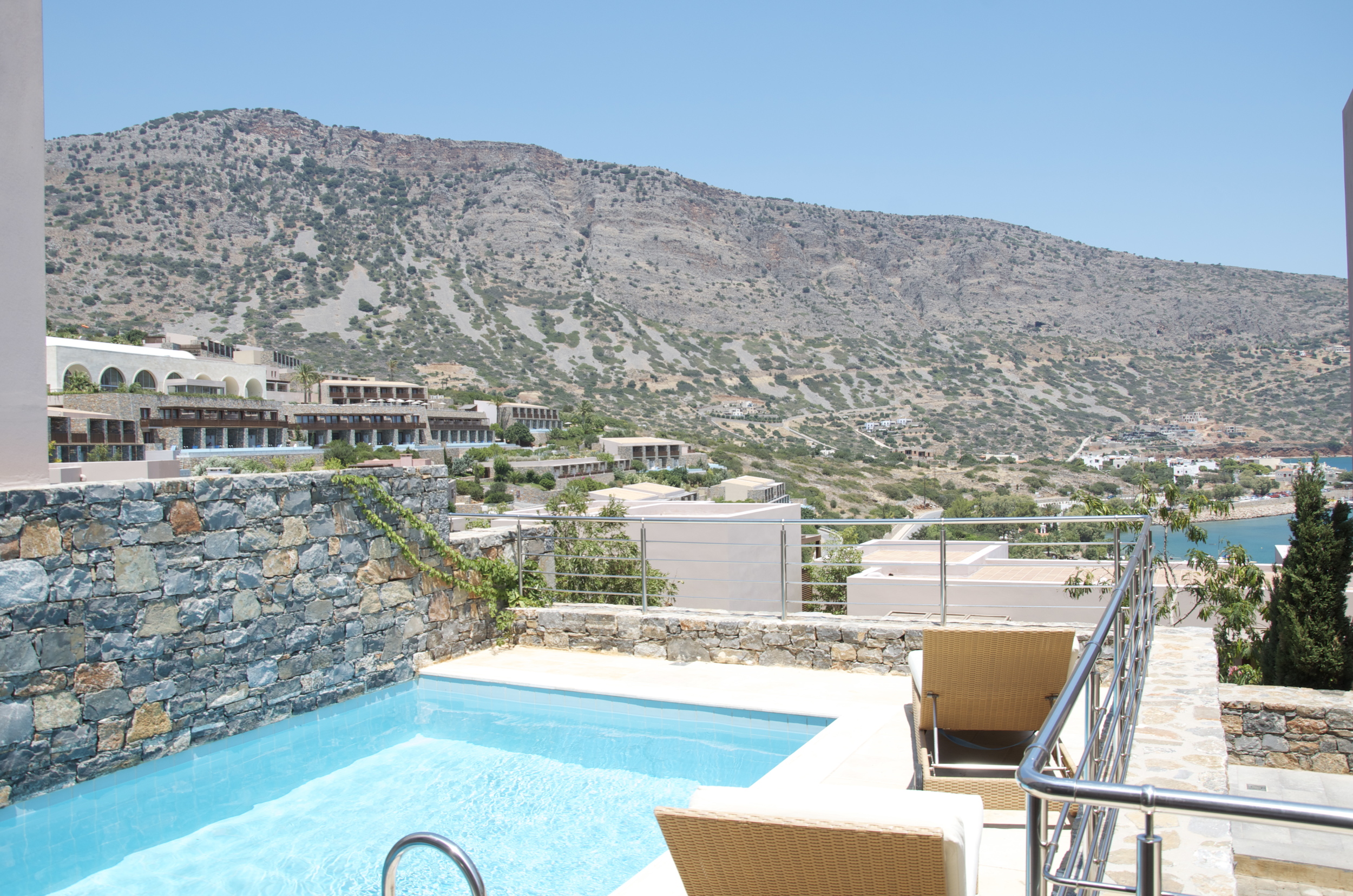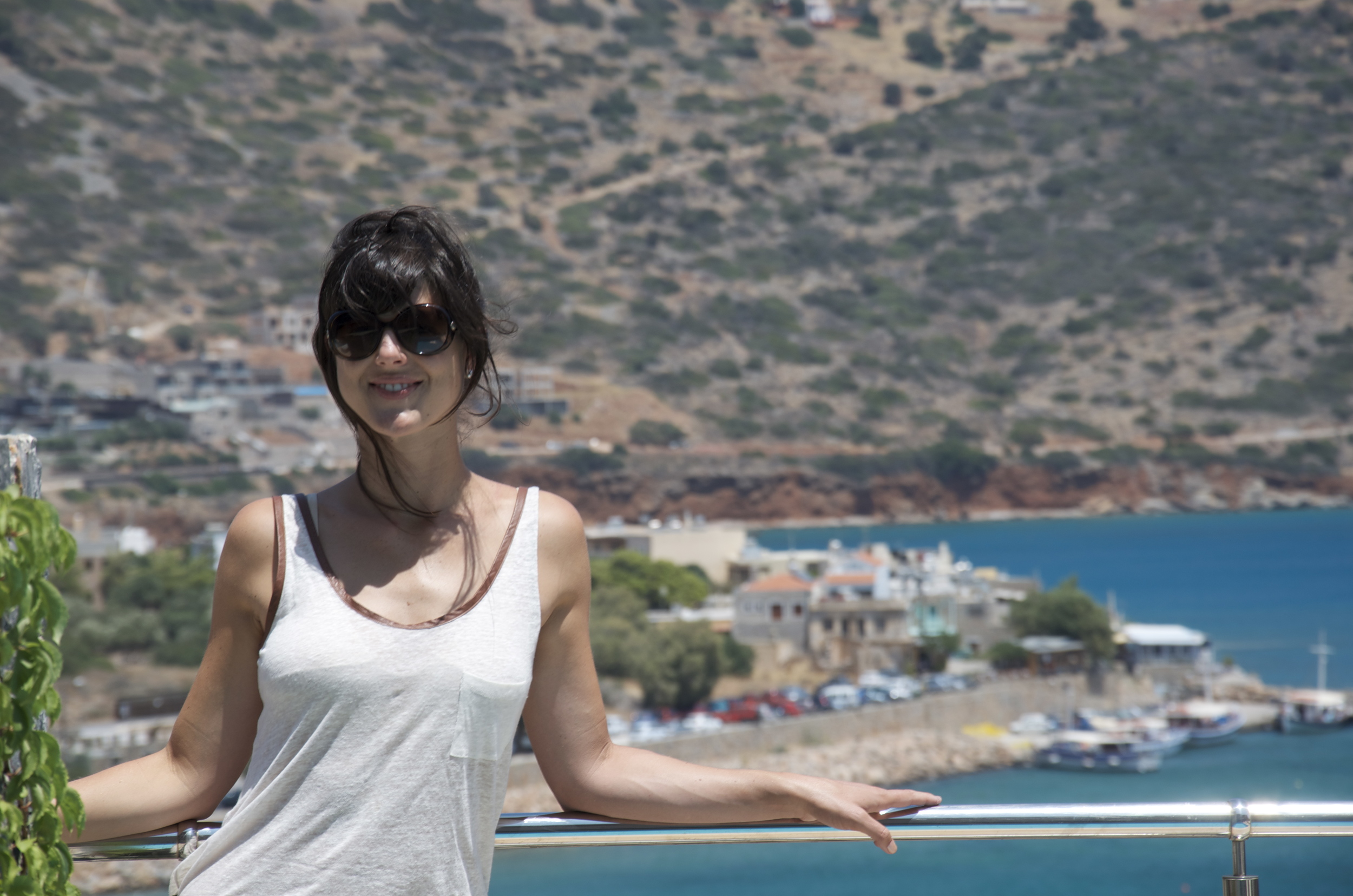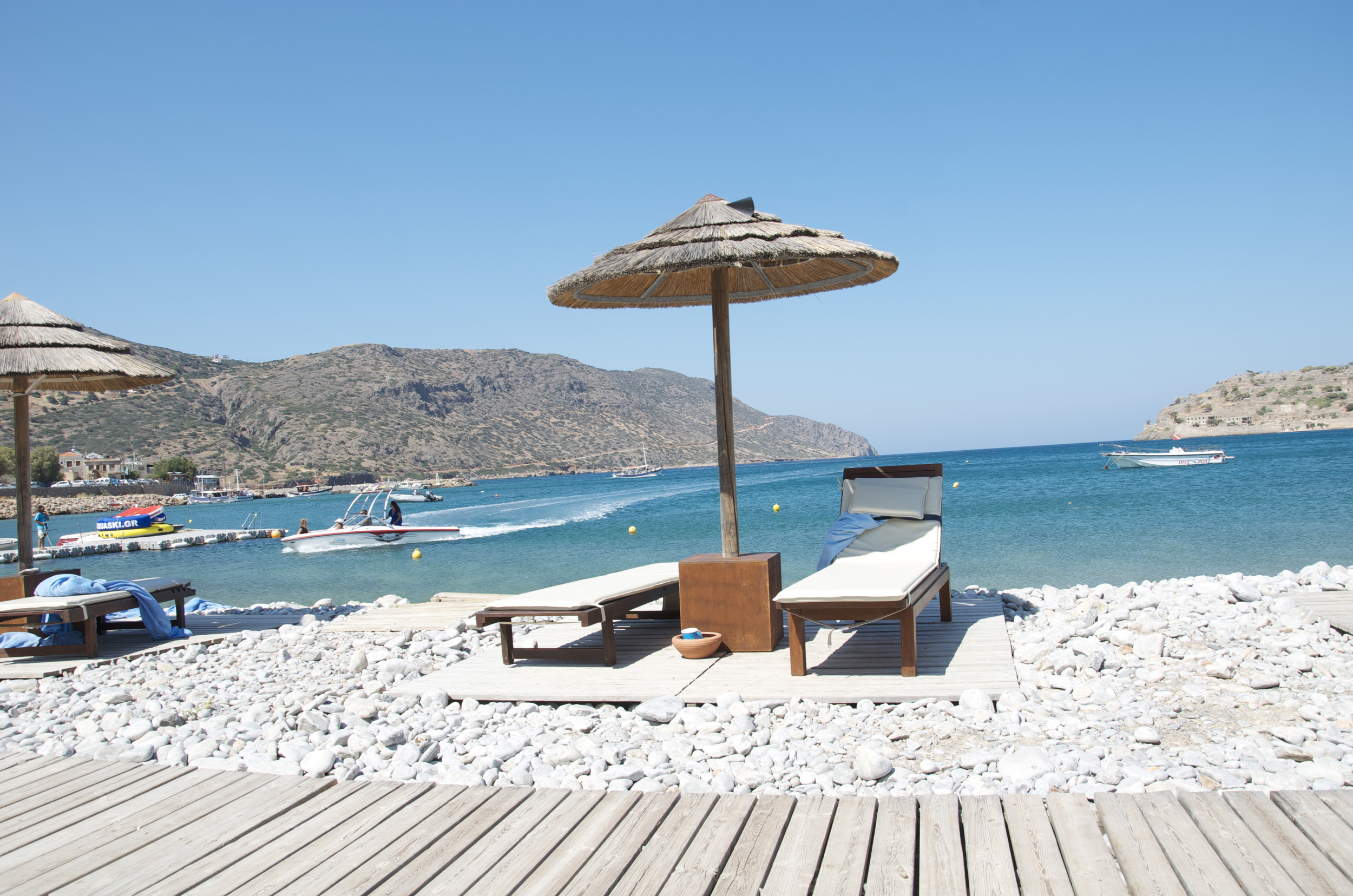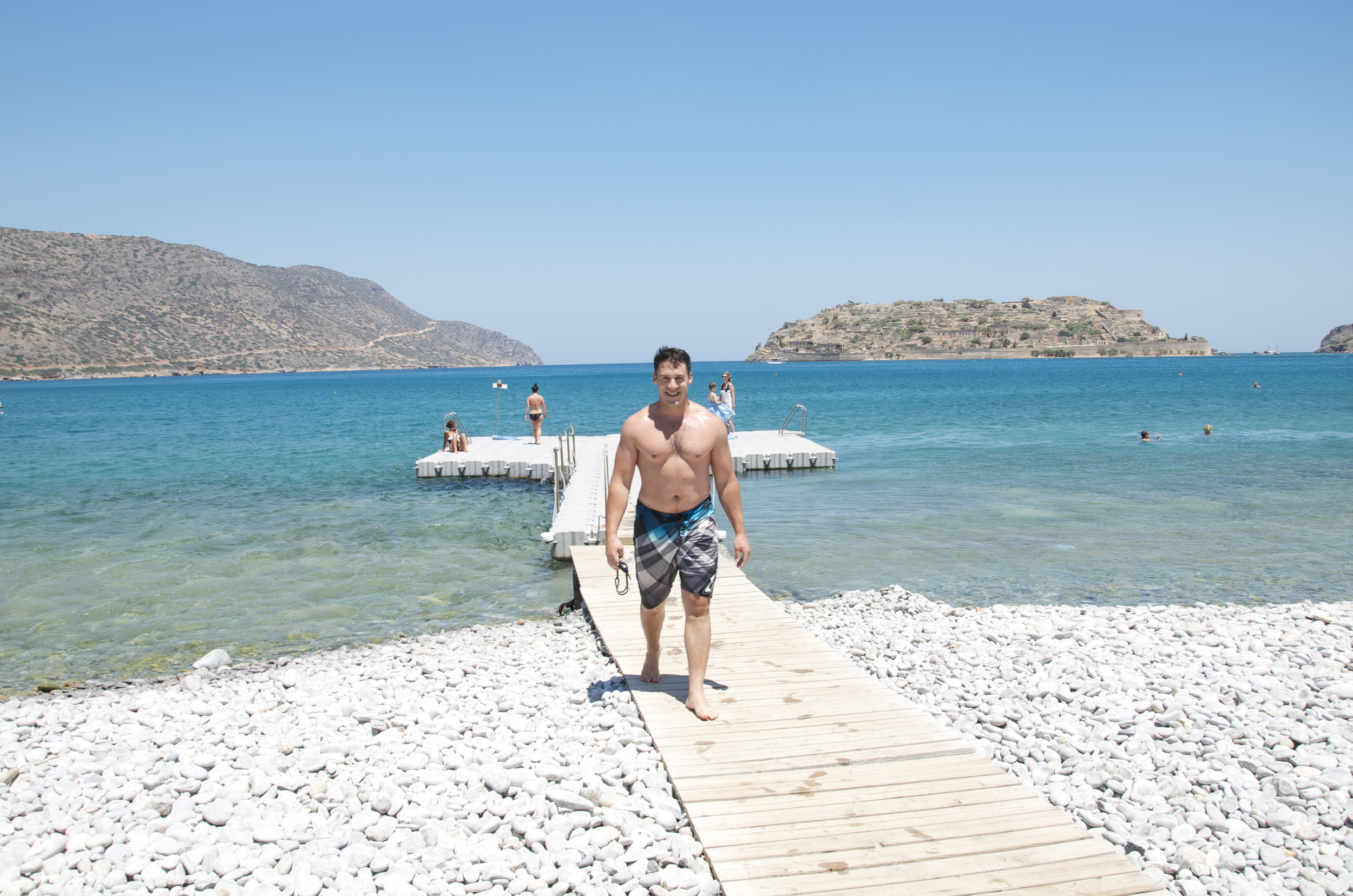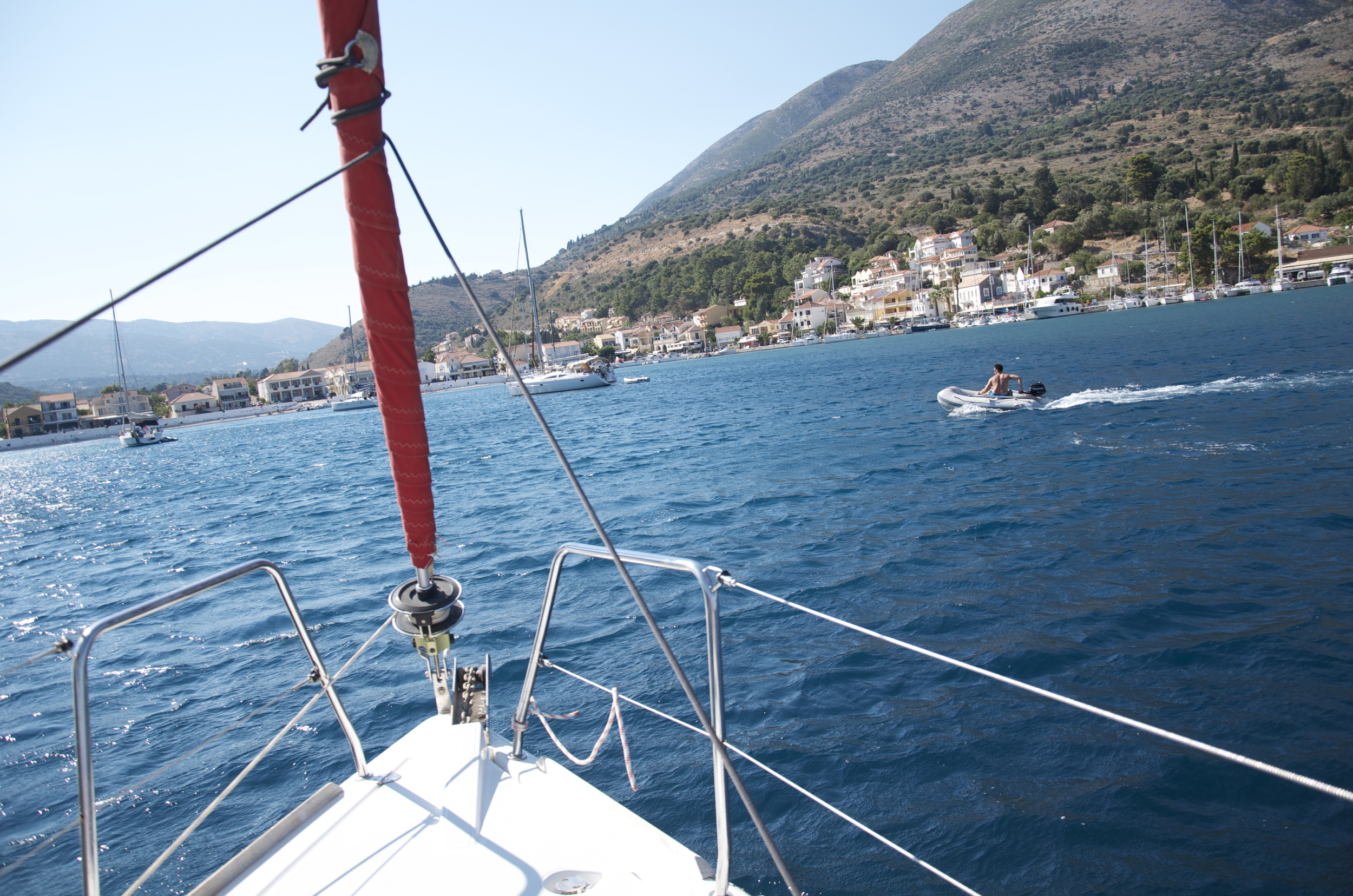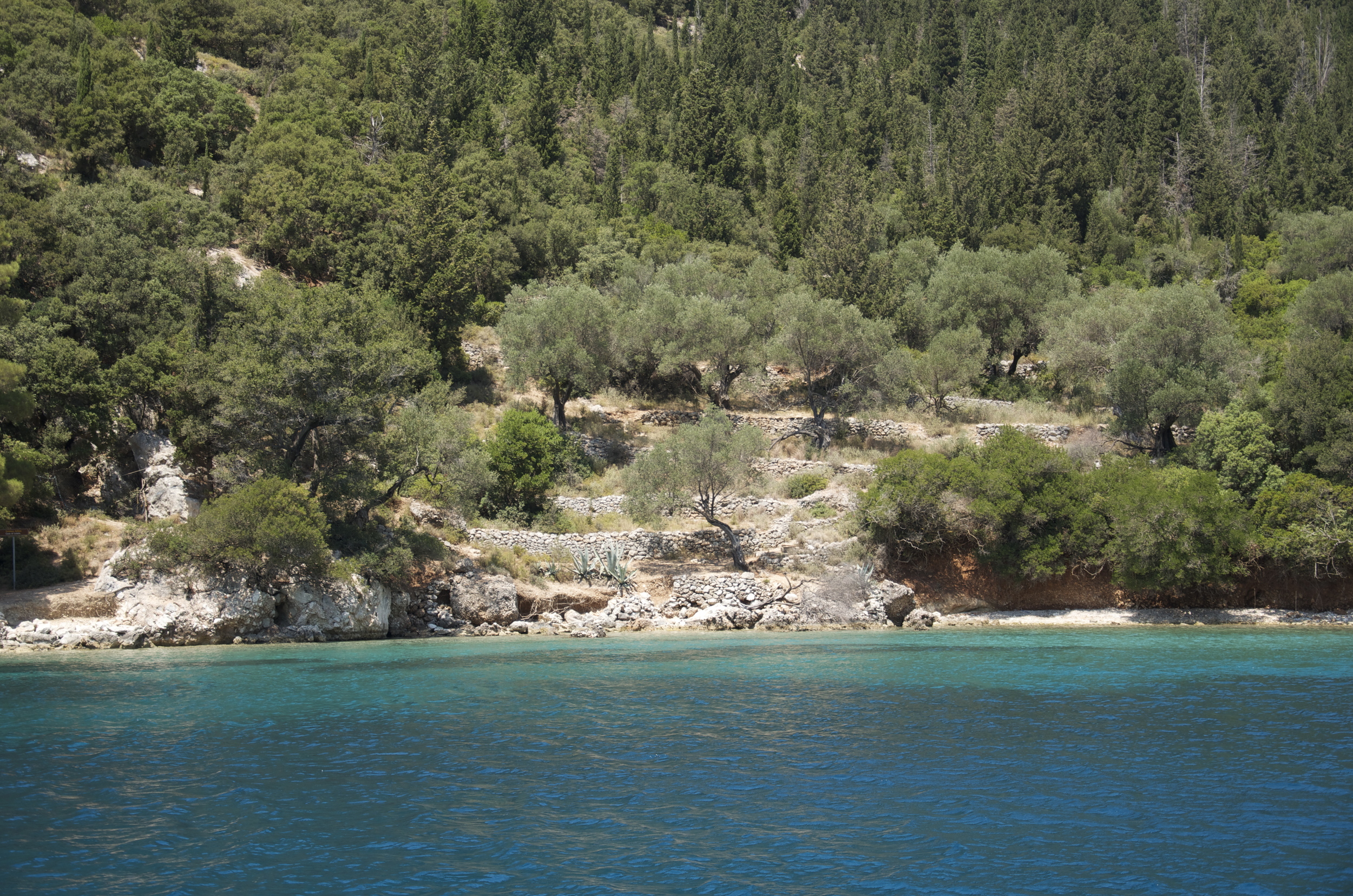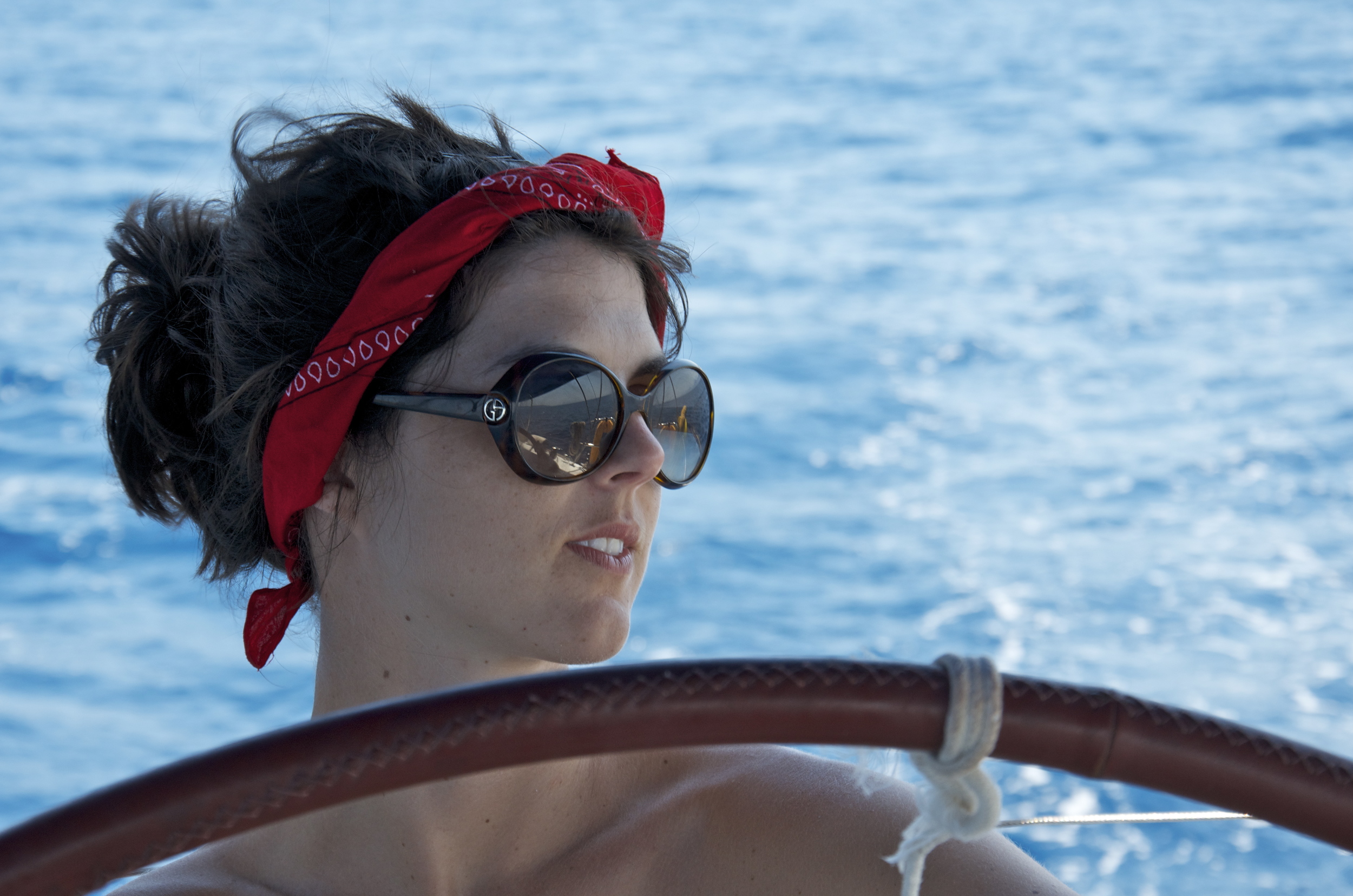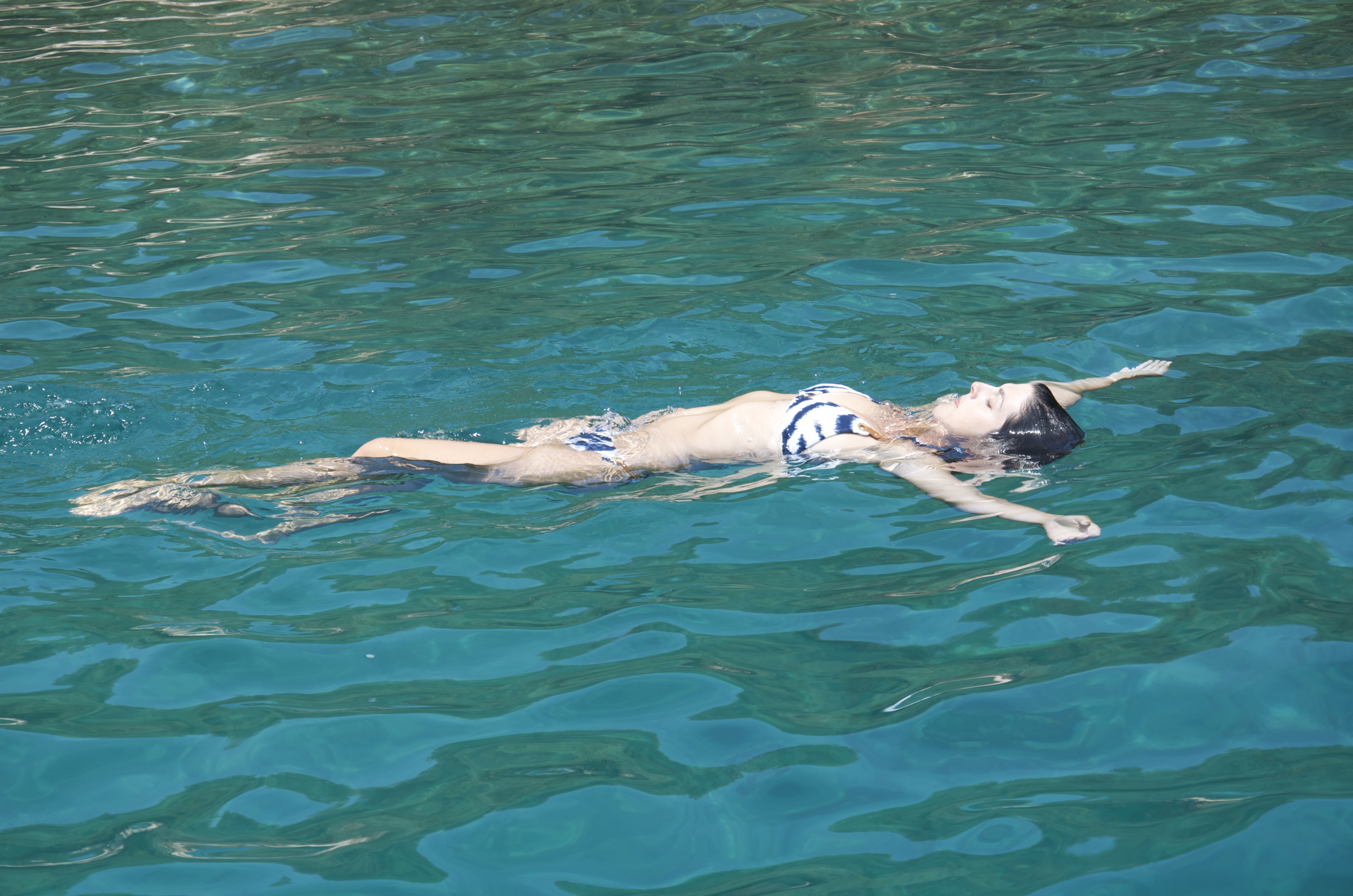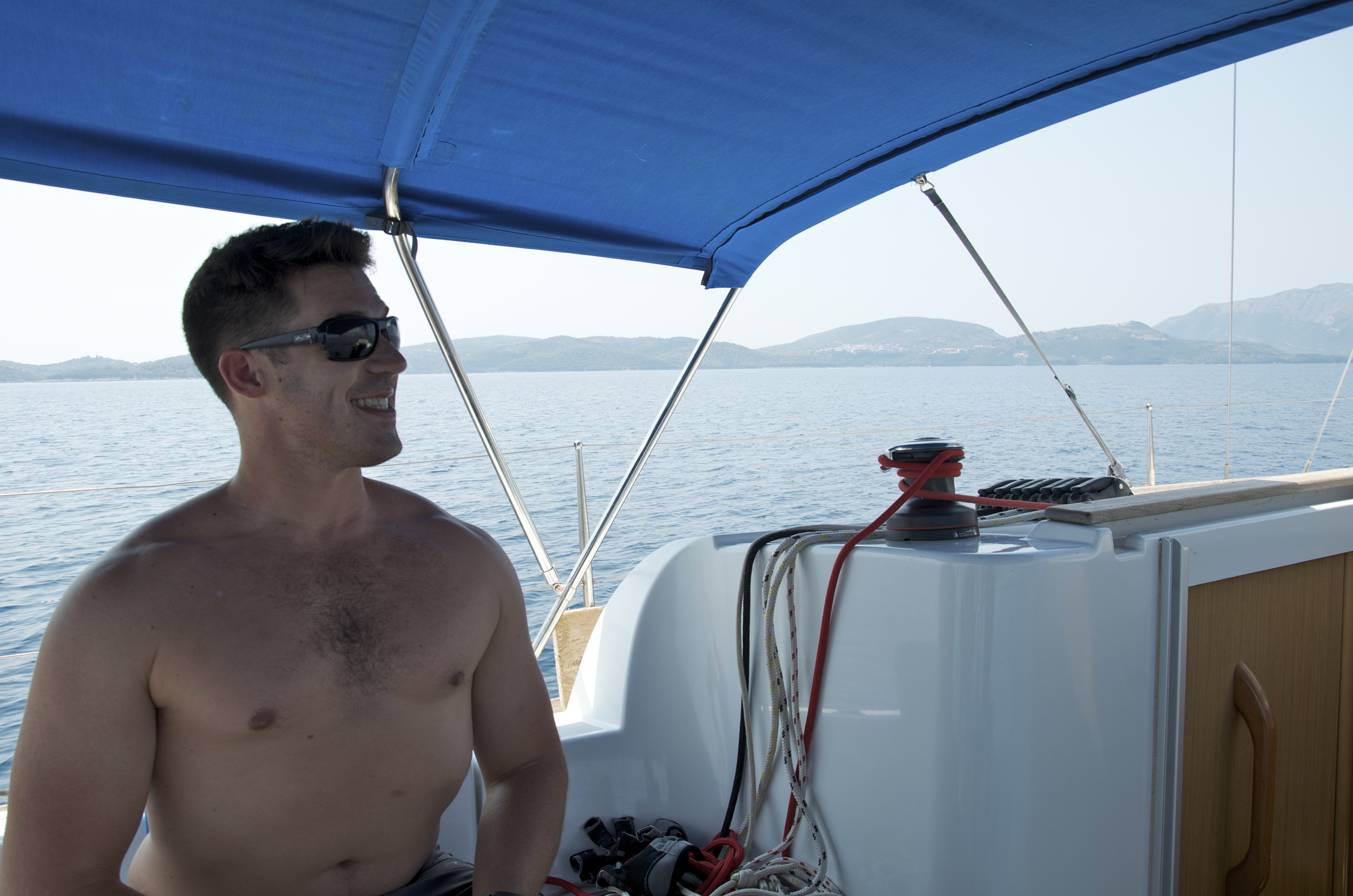Greece! Crete and the Ionian Sea
I always knew I wanted to honeymoon in Greece. We considered a few other tropical locals, but as our marriage coincided with our first sail boat purchase (Dominic bought the boat, picked up the dessert, and drove to the rehearsal dinner…) we decided a sailboat charter in the Ionian Sea was written in the stars.
We were married on July 13, 2013 and flew to Greece the next day. We went first to Crete for a week at the Blue Palace Resort and Spa. It was every bit the dream lounging seaside all day and having champagne with breakfasts promised. Absolute heaven.
As the week went on, the winds picked up. On Thursday we sat in the 70 km/hr gusts and started to get nervous. Despite our sailing experience, we had never actually stayed alone together on a boat overnight.
Thankfully, the Ionian Sea, off the north western coast of Greece, was out of the July wind belt. Defined by the Albanian shore and the Greek island, Levkas, to the north, Kefalonia and Ithaca to the west, and Zakinthos to the south, we had found the perfect place to get some practice trimming our own sails.
We arrived at the Sunsail facility in Vounaki, about a five hour drive from Athens, on Saturday evening. Our 34 ft Jeaneau, Lancelot, was wedged bow-to between another Jeaneau and the corner of the dock—one of the first miraculous feats of Med-mooring we witnessed.
Med-mooring, short for Mediterranean mooring, is the style of docking common throughout the Mediterranean Sea. Generally, it involves dropping an anchor off the bow, and then reversing into a dock, and tying off stern-to. It is a tricky, two-person job in the best of circumstances. For two rookies practicing, in heavy winds and against rocky docks, it was the excitement of our day.
On Sunday, the winds were calm and the sky was hazy as we motored and anchored for lunch at Skorpios, the island owned by the Onassis family. The waters were pristine, translucent, and Jackie’s swimming hut made the idyllic back drop for my oversized sunglasses, my first foray with the windless, and Dominic’s first swim to check how well our anchor held.
That afternoon we continued on to Vathi, the northern-most bay on the island Meganisi. We snuck in as part of the Sunsail flotilla and took advantage of the dock hands to help us with our lines. We successfully docked stern-to nestled between Sunsail neighbors. We drank prosecco and watched late coming yachts try to anchor and then move on in search of less occupied spaces.
Vathi was modern, built after the 1955 earth quake, and very endearing. We explored the town end to end, took in the incense of the church on the waterfront, and dined on Greek salad and grilled halloumi cheese as we guessed how many people it took to staff the 150 ft motor yachts moored around us.
On the second day we decided to ditch the flotilla. We took our time motoring along the northern coast of Meganisi until we found a cove for the afternoon. The scenery was distinctive throughout—dry hills and peaks, the earthy greens of Cyprus and arid shrubbery, and the silver of olive trees, trellised and untamed.
We anchored in about ten meters and took two lines ashore. The depth of the wine dark sea created a challenge anchoring throughout (Vathi, as it happens, means deep in Greek). And because anchoring often required more chain than was on the boat, we found ourselves taking precautionary measures as we could.
Not to mention that taking lines ashore is an excellent excuse for Dominic to get his dive knife and jump off the stern, test various trees for their strength, and tie enourmous knots for swinging and swimming.
After a glorious afternoon, the waters were sapphire, Dominic and I moored for the night in Spartochori, another bay on the North of Meganisi. We picked it for its name, proximity, and solitude.
The waters were so deep at this anchorage that after we moored stern-to we had six feet of vertical stone ledge to port and over 40 ft of navy abyss to starboard. There was one restaurant on a grey stone beach with two docks, and a beach with another small marina about a quarter mile deeper into the cove.
Each of the towns we visited seemed to be retreat towns that opened in the summer to cater to vacationers and sailing tourists. Most consisted of a harbor, with a main street lined with restaurants, yogurt and souvenir shops. Fiscardo, our next anchorage, seemed to be the only major tourist destination.
Fiscardo
On the northern shore of Kefalonia, Fiscardo is one of the only towns to have survived the 1955 earth quake. As such, it maintains the small winding cobble stone streets, and brightly colored blue doors authentic to Greek postcards. Recently, these cobble stone streets have been filled with discothèques and espresso bars, and the marina itself was one of the most chaotic waterways I have ever seen.
We were moored stern-to next to a 55 ft power boat out of Athens. There was about a yard of space between our hulls. As the sun set, and the harbor filled, not one, but two separate 40+ ft mono-hull sail boats tried to reverse into the space between Lancelot and the powerboat. It was insane.
Similarly, at the end of our dock was a lamppost. By nightfall, no fewer than five boats had moored to the single lamppost base. It was a convivial atmosphere, no doubt, but a hectic one.
The next day we had our first full day of sailing. With twelve knot winds on our beam we cruised between Ithaca and Kefalonia, slowing as we passed Nymph Cove and countless lagoons.
At sunset the winds were gusting thirty knots into an anchorage that only had openings perpendicular to the wind. We decided to drop anchor in the small bay. Deciding that one anchor of the bow wasn’t secure enough, Dominic hopped into the dinghy with our stern anchor and motored out, dropping it off our starboard bow.
The next day was another full day of sailing. We looped around the southern cape of Ithaca (Ithaca, at last!) and arrived at Kioni, our favorite anchorage of the trip. It was on the eastern side of the island, so the sunset behind the island ridge was spectacular.
The bay in Kioni was lined with granite boulders. At some point the boulders had been smoothed and augmented in such away that they were transformed into private swimming ledges. Dominic and I spent hours swimming, snorkeling and diving into the 80 degree water. If I were a mermaid, Kioni would be my port of call.
From Kioni we sailed Lancelot back to her port of call, Vounaki. Naturally, on our last mooring, we wrapped the dinghy line around the prop. “Don’t worry,” the deck hand said, “we’ll put her on the list to untangle tomorrow.”
And so, we were forgiven our novice faux pas. We passed one more restful night on Lancelot before flying home to San Francisco.

